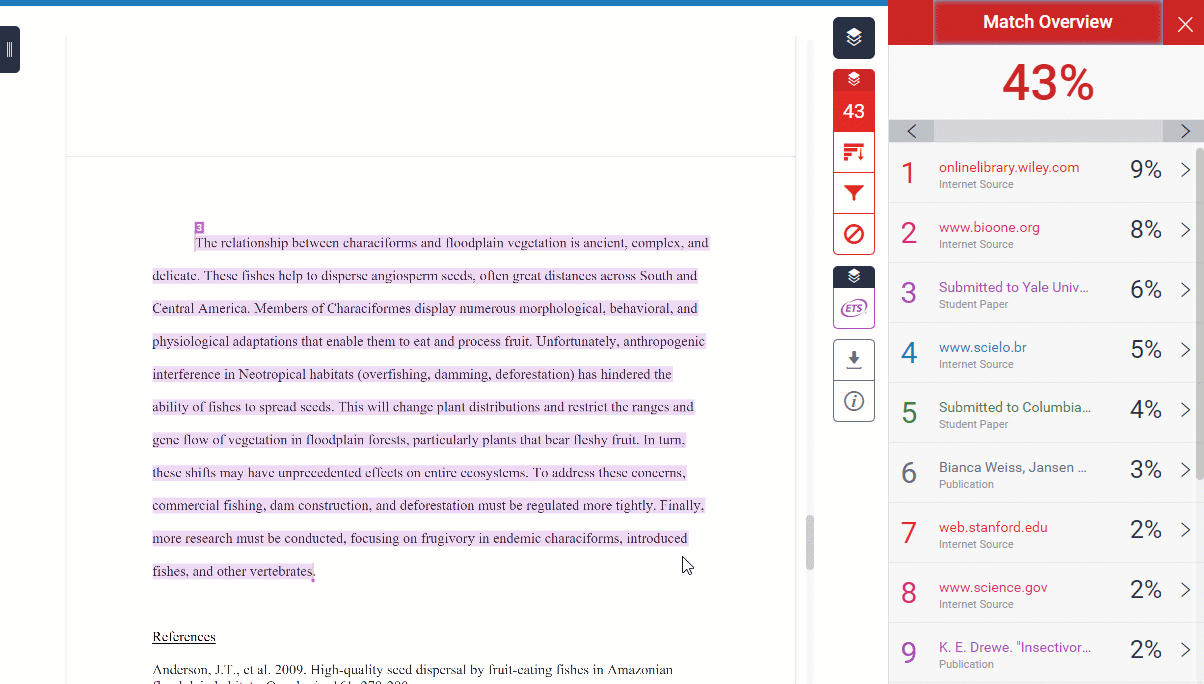Turnitin will flag any material a student has previously submitted through the software—either in a Yale course or in a course at another institution. Since Turnitin does not show the text of papers submitted at other institutions, it can be difficult to verify that your student was the author of the previous paper (though a match with a paper submitted in a high school is a clue that it may have been written by your student). If your student has previously submitted the paper in a course at Yale, Turnitin will flag the match as a paper “Submitted to Yale University.” To determine that the source paper was submitted in a previous course by your student:
- Click on the number above the highlighted text. (You can also click the source in the right sidebar.)
- In the pop-up window, click the “full source view” icon to display the source side-by-side with the student paper.
- Scroll to the top of the source paper to look for the author’s name, the course it was submitted to, and the submission date.
- Scroll to the top of your student’s paper and compare the name, course, and submission date with those of the source text.
In the example below, both papers were written by the same student (Ezra Stiles) in different courses (FISH 101 and FISH 202) and submitted about a year apart. This suggests that the writer of the paper has recycled material he wrote for a previous course.

Though the Yale College Undergraduate Regulations explicitly disallow multiple submission, many students are unaware that submitting the same work in more than one course constitutes academic dishonesty. Even when they are told that multiple submission is a violation of Yale College policy, students often express confusion about why they can’t submit their own work in more than one course. If plagiarism is theft, as many students have been taught, then how is it possible to steal from yourself?
How to Respond to Your Student
Because students are often confused about both the prohibition on multiple submission and its rationale, responding to a student who has recycled writing from a previous course is an opportunity to teach the student the reasoning behind the policy. You might respond: “Parts of your paper are similar to passages you submitted in Course X. Because doing the work is the foundation of your learning in this course, resubmitting material you wrote for a different course is prohibited in my class and is considered academic dishonesty by Yale College.”
What You can Do in Class
Addressing multiple submission in class is an opportunity to show your students that you value their learning. Tell them—in class and on the syllabus—that much of what they learn in your class will come from doing to work on their assignments, and as a result, they aren’t allowed to resubmit work they’ve written previously.
You can reinforce these values by assigning students writing prompts that engage the particulars of your course. This will position students to learn the course material as they complete their assignments and limit their opportunities to submit writing from previous courses.
